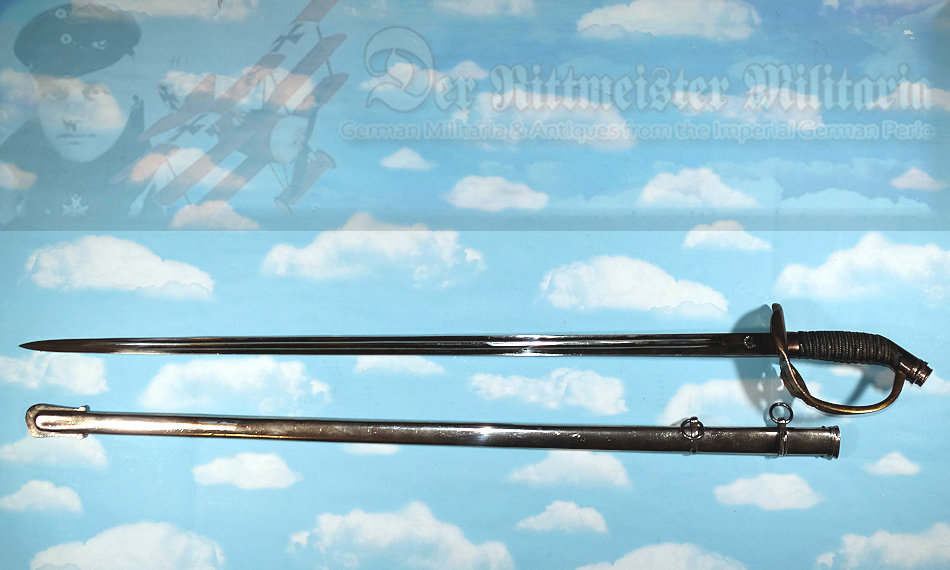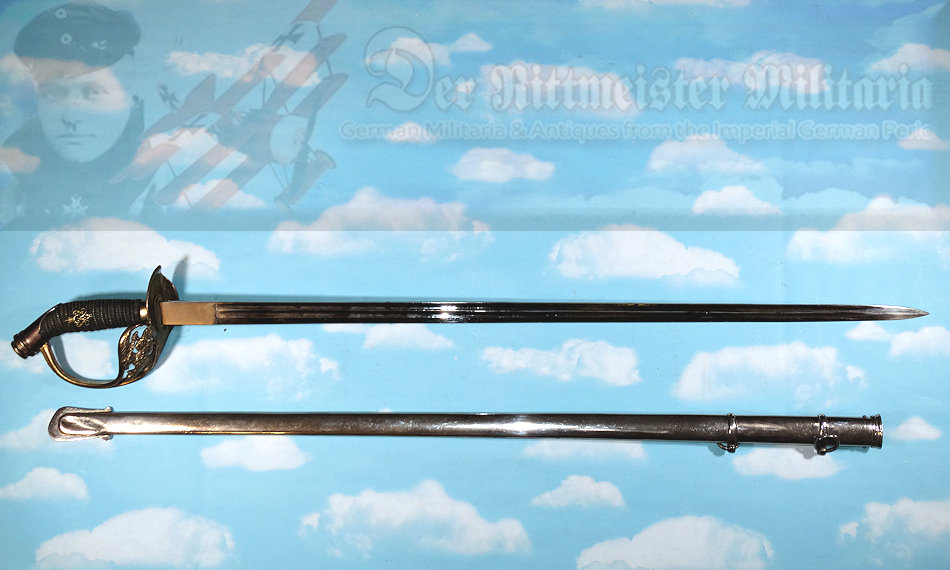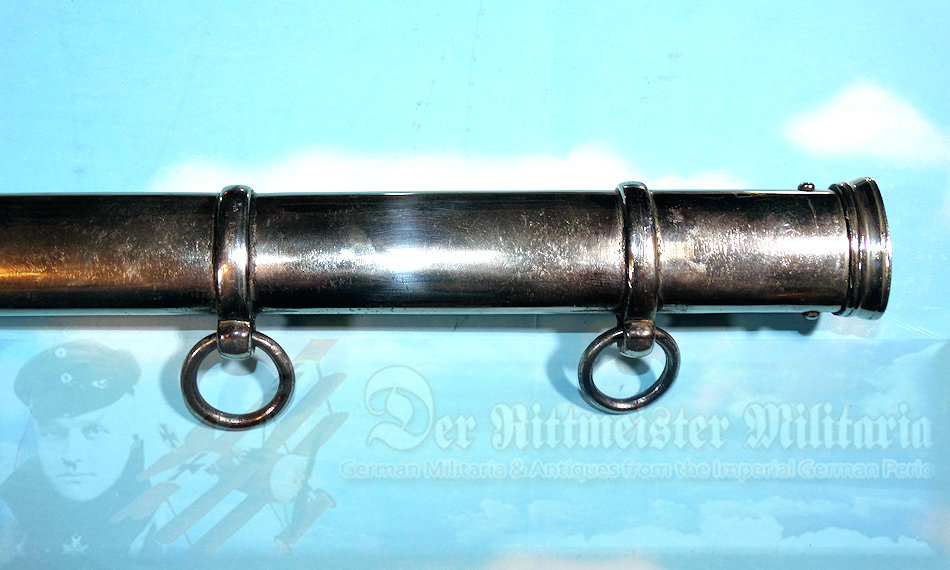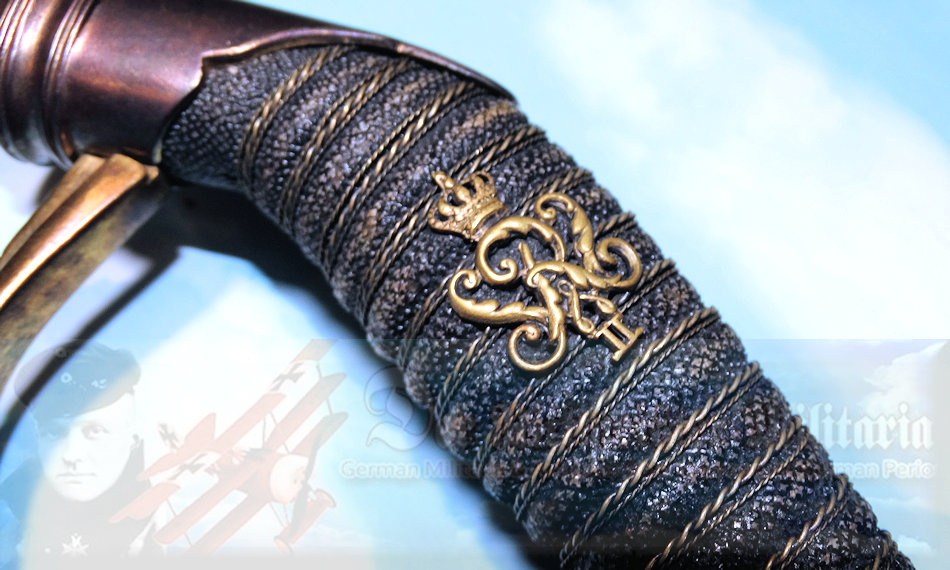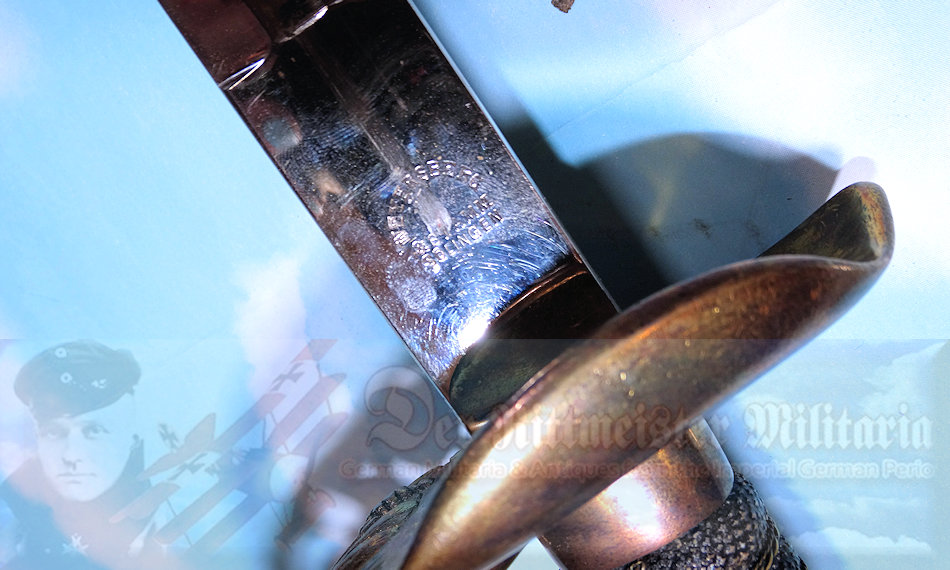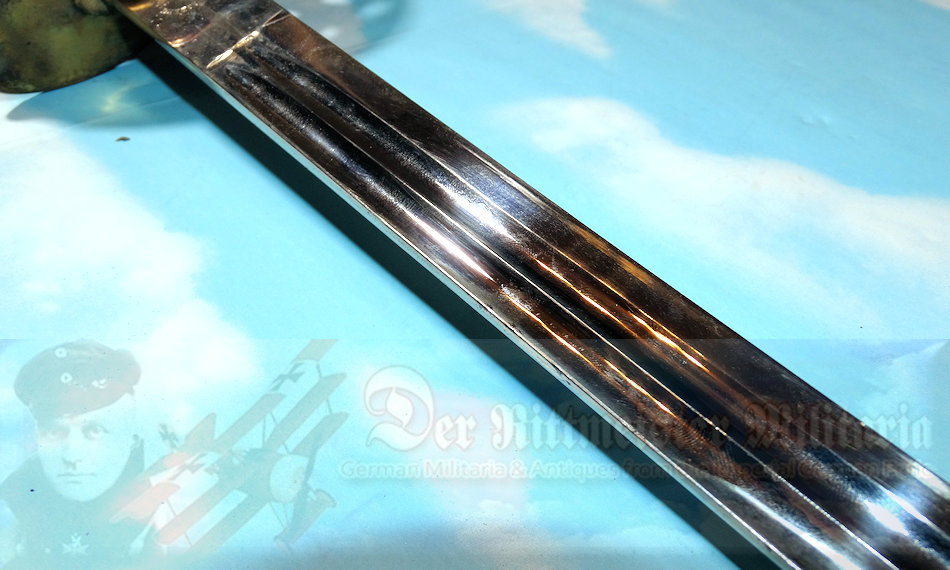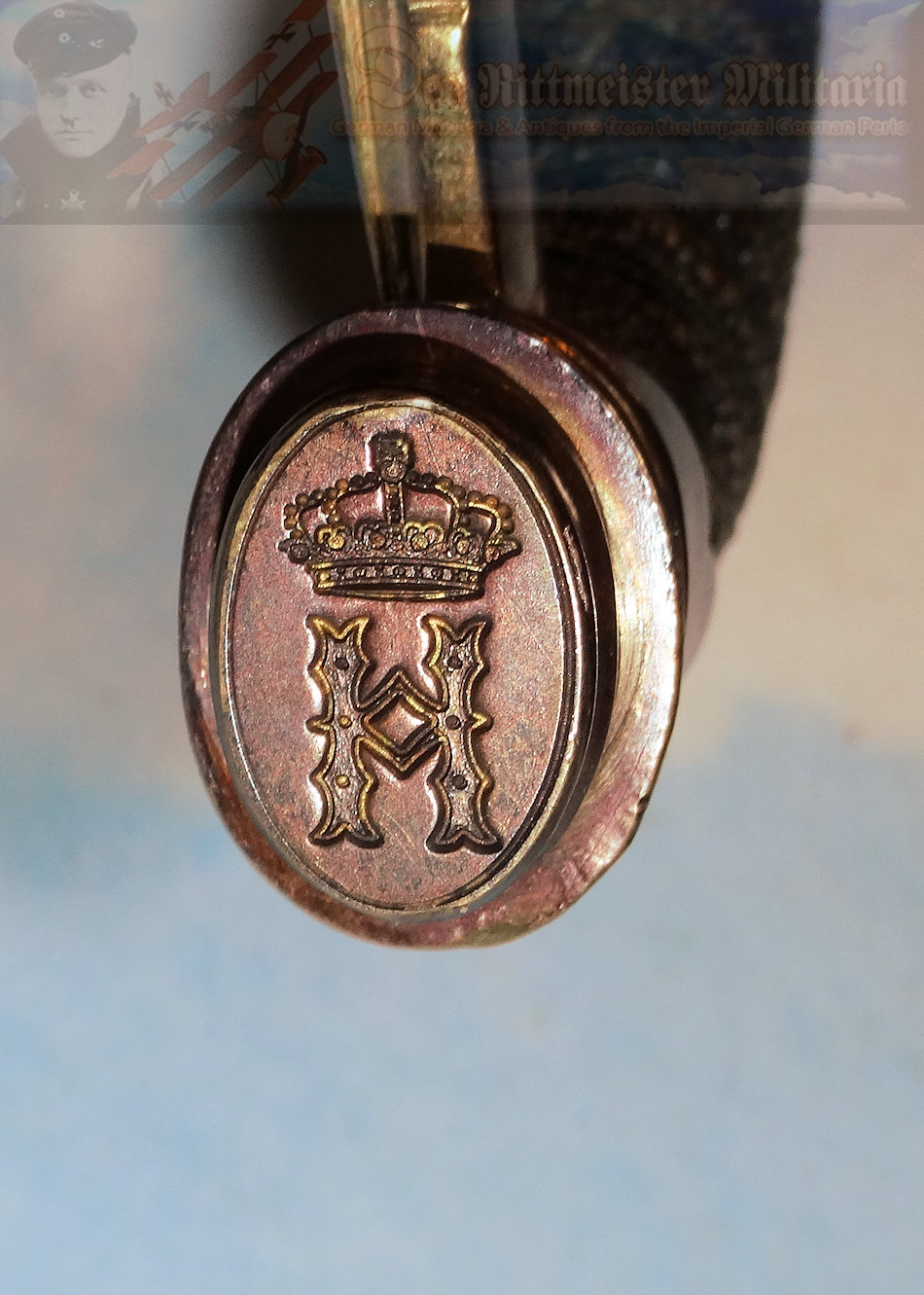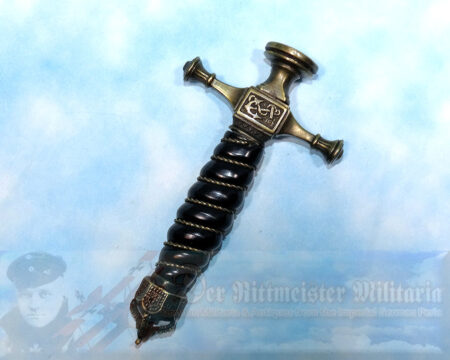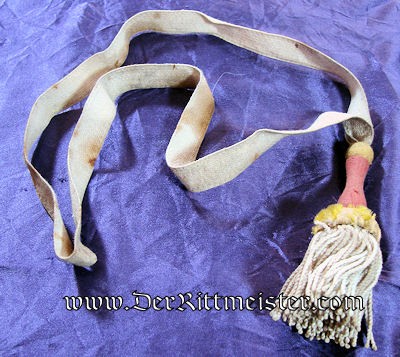Description
SWORD – PRUSSIA – INFANTERIE OFFIZIER’S M-1889 DEGEN – ATTRIBUTED TO PRINZ HEINRICH.
Our offering today is a sword that does NOT display any regimental information. However, we have clear evidence that attributes it to Prinz Heinrich of Prussia (1862-1929), Kaiser Wilhelm II’s younger brother, which we will present below. As you may remember, Heinrich was Kaiser Friedrich III’s second son, and one of Imperial Germany’s more popular royals. Primarily a Navy man, he rose in rank to eventually become one of only six men to achieve the rank of Großadmiral. [Here’s an interesting historical tidbit: Prinz Heinrich commanded the royal yacht S.M.Y. Hohenzollern in 1888]. He eventually rose to command all German Navy units based out of Kiel. During WW I, he operated chiefly in the Baltic. His primary opponent was Russia, which had second-rate equipment at best. [Heinrich’s naval vessels were not much better].
While Prinz Heinrich was a Großadmiral in the Kaiserliche Marine, he also served as a Generaloberst in the rank of Generalfeldmarschall in the Imperial German Army. Like all Prussian House of Hohenzollern princes, he had been mustered into the 1. Garde-Regiment zu Fuß at a very young age. He eventually became the Regimental Chef of regiments from Saxony, Bavaria, and Hesse-Darmstadt, as well as the Füsilier-Regiment Prinz Heinrich von Preußen (1. Brandenburgisches) Nr 35. Prinz Heinrich received the latter appointment in 1896. [This regiment was raised in 1815, garrisoned at Brandenburg a.H., and assigned to the Prussian III. Armeekorps].
In the case of all of the regiments for which Heinrich served as Regimental Chef (or Colonel-in-Command), he held the rank of Generaloberst in the rank of Generalfeldmarschall. The latter rank was an honorary title intended for use by royals who did NOT have direct field commands. Each of these regiments actually was commanded on a daily basis by a military career Oberst or Oberstleutnant. Regimental Chefs appeared with “their” regiments for parades and special events, wearing uniforms and headdresses that were identical to those worn by the regiment’s rank and file members. Some of the regiments that Prinz Heinrich represented were Artillerie Regiments, in which case he donned a kugelhelm. When he was accompanying his Infanterie Regiments, he sported a pickelhaube.
Although this sword lacks the regimental markings that would assist in its identification, it does give us clues. Commonly referred to as an “IOD 89,” the sword is officially entitled as a “Preußisches Infanterie Offizier Degen M-1889.” It measures 40” in length from the hilt’s top to the bottom of its scabbard. When drawn from the scabbard, it measures 38” in length, while the blade is 32.” The bright nickle scabbard has two rings with which to mount it onto a sword belt. [Two-ring scabbards were used prior to 1906. After 1906, they were reduced to sporting a single ring].The scabbard features a couple of minor dings and some scratching, which is quite good for a more than 100-year-old sword.
The sword’s hilt is made of finely fire-gilded brass that displays a magnificent finish in lovely condition. The ebony-colored, single-brass-wire-wrapped grip (I am reasonably certain) is made of tight, straight sharkskin. The grip also displays Kaiser Wilhelm II’s brass royal cypher. The oval-shaped pommel brandishes the sword’s most-exciting feature and a major clue, Prinz Heinrich of Prussia’s royal cypher, a crowned “H.” When removed from its scabbard, the blade reveals a plain, unadorned finish in exceptional condition. NO special engraving is present, just handsome, double blood-gutters. Its white felt buffer is discolored with age, yet still protects the blade from rubbing against the hilt. Near the blade’s top we see its manufacturer’s name, “Weyersberg & Stamm – Solingen.” This small firm did a lot of contract work for Austria’s and Bavaria’s Militaries, as well as special orders for Prussian officers, another clue.
Now it is time to pull all the research and other details together. Years ago, I was privileged to acquire a complete 1. Garde-Regiment zu Fuß group for Prinz Heinrich. This group included his mitre, his tunic with epaulettes, and a sword, which was nearly identical to the sword we are offering today. Its blade was also quite plain and sported Prinz Heinrich’s crowned cypher on its pommel. That first sword and the rest of its group are now in the hands of a very advanced collector. The end result is that Heinrich was associated with only one other Prussian regiment, his “own” Füsilier-Regiment Prinz Heinrich von Preußen (1. Brandenburgisches) Nr 35! All of the other regiments for which he was the Regimental Chef were NOT Prussian, meaning IT is the most likely regiment from which it came.
Royalty items are always sought-after. It is seldom that we can offer you an edged weapon from a German royal. It is rarer yet to offer an edged weapon from Prinz Heinrich! He was arguably the third best-known member of the House of Hohenzollern after Wilhelm II and his son Kronprinz Wilhelm.
This has been one of the most interesting and challenging descriptions that I have written in a long time. I hope that you have enjoyed the description as much as I have in writing it. I further hope to find a good home for this fine sword! This is a consignment item.
